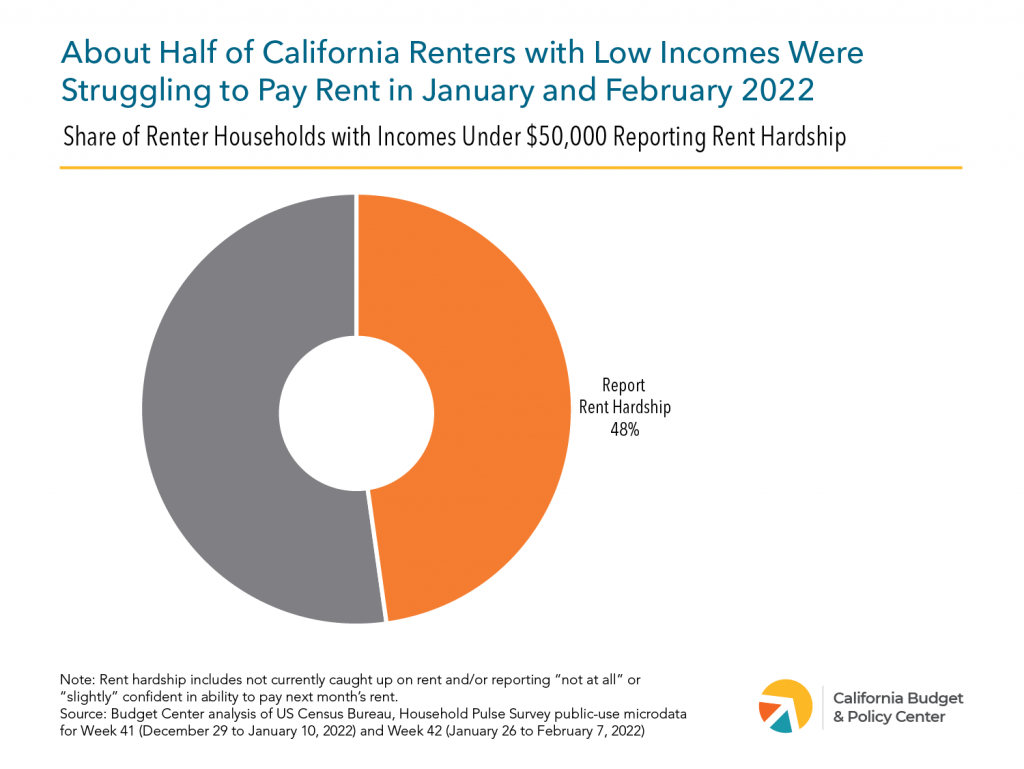A safe, stable, and affordable home is the foundation for all people to prosper. Yet ongoing housing affordability challenges mean that many California renters – especially Californians of color and those with low incomes – are struggling to meet housing costs.
Renters of color, especially Black renters, are more likely to be behind on rent. These disparities are intrinsically linked with racist housing, employment, and education policies that have blocked Californians of color from opportunities to achieve housing and economic stability. In addition, about 1 in 6 California renters with incomes less than $50,000 reported being late on rent in recent months.

By removing barriers to affordable housing development and prioritizing meaningful funding to expand the supply of these homes, policymakers can ensure everyone has access to an affordable home. Doing so allows Californians the opportunity to build economic security and avoid the devastating effects of eviction or homelessness.









